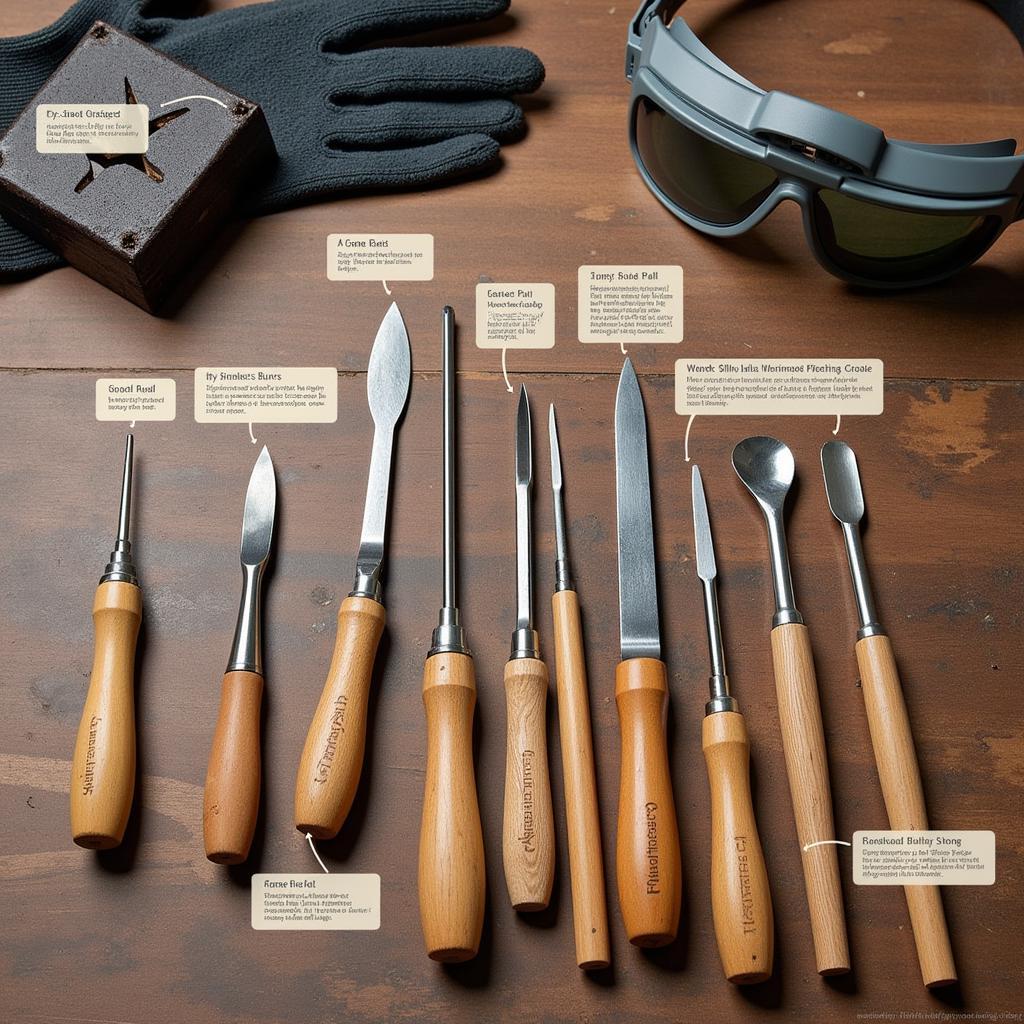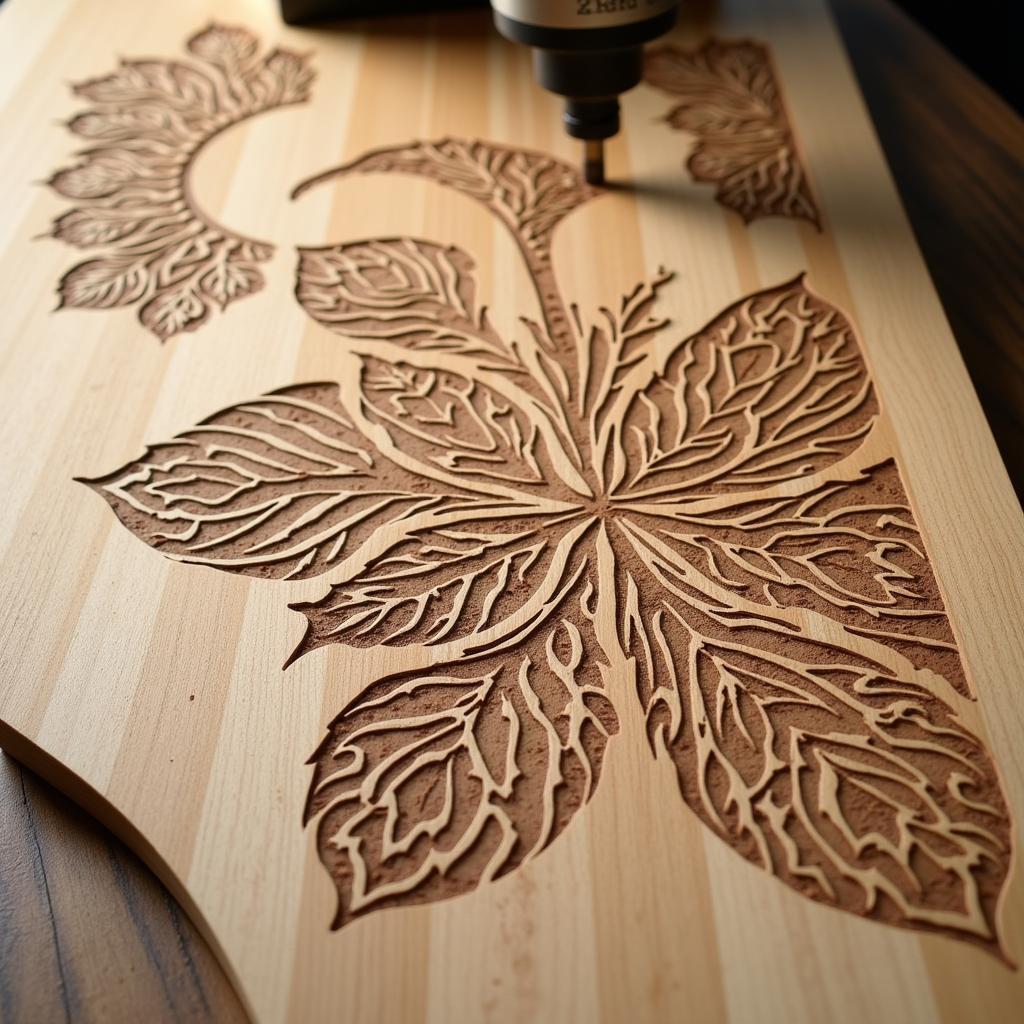Discovering the Depth of Incising Art
Incising Art, a timeless technique of carving designs into a surface, offers a captivating blend of precision and artistic expression. From ancient petroglyphs to contemporary engravings, this art form continues to fascinate and inspire. This article delves into the world of incising art, exploring its history, diverse techniques, and the creative possibilities it unlocks for artists. Check out these stunning fine art lithographs for inspiration!
A Journey Through Time: The History of Incising Art
Incising art boasts a rich history, stretching back to prehistoric times. Early humans used sharp tools to carve images onto cave walls, creating lasting records of their lives and beliefs. These early examples, known as petroglyphs, provide valuable insights into ancient cultures. The practice evolved over centuries, influencing various art forms and cultures around the world. From the intricate carvings on Egyptian tombs to the decorative patterns on Native American pottery, incising art has left an indelible mark on human history.
Incising has been employed across a variety of materials, including stone, wood, metal, and bone. The specific techniques used vary depending on the chosen material and the desired effect. For instance, stone carving requires specialized chisels and hammers, while wood carving often involves the use of gouges and knives. Regardless of the method, incising art demands patience, skill, and a keen eye for detail.
Exploring the Diverse Techniques of Incising Art
Several distinct incising techniques have emerged over time, each offering unique artistic possibilities. Intaglio printmaking, for example, involves incising lines into a metal plate, which is then inked and pressed onto paper. This technique creates fine, detailed prints that are prized for their delicate beauty. Another popular technique is wood engraving, which involves carving designs into a block of wood, creating a relief image that can be used for printing.
What tools are needed for incising art? The tools vary depending on the chosen material and technique, but commonly used tools include gravers, burins, chisels, gouges, and knives.
 Incising Tools for Various Materials
Incising Tools for Various Materials
Incising Art in the Modern Era: A Fusion of Tradition and Innovation
While deeply rooted in tradition, incising art continues to evolve in the modern era. Contemporary artists are pushing the boundaries of the medium, experimenting with new materials and technologies. Laser engraving, for example, allows for incredibly precise and intricate designs, opening up new avenues for creative exploration. The incorporation of digital tools and techniques has further broadened the scope of incising art, enabling artists to create stunning and innovative works.
“Incising art is not merely about carving lines; it’s about carving narratives,” says renowned artist, Amelia Hart. “Each mark tells a story, each groove reveals a layer of meaning. It’s a powerful way to connect with the material and express oneself.”
What Makes Incising Art Unique?
Incising art stands out for its tactile quality and the interplay of light and shadow it creates. The carved lines and textures add depth and dimension to the artwork, enhancing its visual appeal. Moreover, the permanence of incising makes it a powerful medium for storytelling and cultural preservation.
 Modern Incising Art: Laser Engraved Wood Panel
Modern Incising Art: Laser Engraved Wood Panel
What are some examples of incising art in different cultures? Incising art manifests in diverse forms across cultures, including petroglyphs by indigenous Australians, intricate wood carvings in Polynesian cultures, and elaborate engravings on Japanese swords. Explore the fascinating art of engraving for more examples.
Unleashing Your Creativity: Getting Started with Incising Art
If you’re intrigued by incising art and eager to explore its potential, numerous resources are available to help you get started. Online workshops, tutorials, and art classes offer guidance and support for beginners. Experimenting with different materials and techniques is key to discovering your own unique style and artistic voice. “Don’t be afraid to experiment and make mistakes,” advises sculptor, David Miller. “The beauty of incising art lies in the process of discovery and the unique mark you leave on the material.”
Conclusion
Incising art offers a compelling blend of tradition and innovation, providing artists with a powerful medium for self-expression. From its ancient roots to its modern applications, this art form continues to captivate and inspire. By exploring its diverse techniques and embracing the creative possibilities it offers, you can embark on a rewarding artistic journey. So, pick up your tools, explore the world of incising art, and discover the beauty of carving your own creative path.
FAQ
- What is the difference between incising and carving?
- What materials are best for incising art?
- What are the basic tools needed for incising?
- Where can I learn more about incising techniques?
- What are some common mistakes beginners make in incising art?
- How can I preserve my incising artwork?
- Are there online communities for incising artists?
Need support? Contact us at Phone: 02462573573, Email: danteum@gmail.com or visit us at Savico Megamall, 7-9 Đ. Nguyễn Văn Linh, Gia Thụy, Long Biên, Hà Nội 10000, Việt Nam. We have a 24/7 customer service team.

